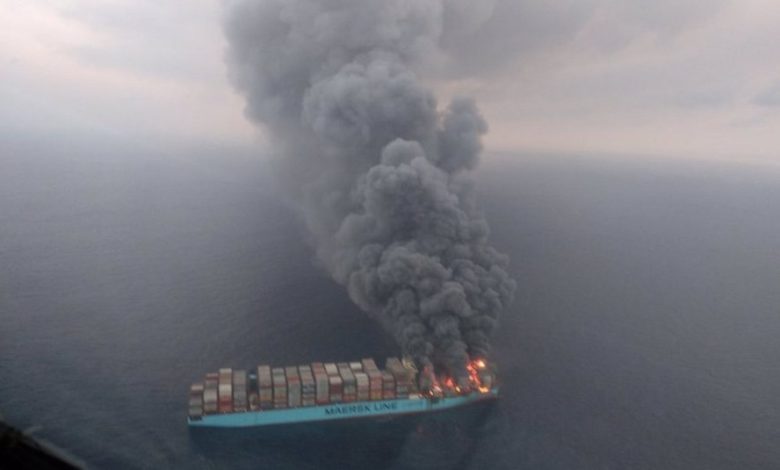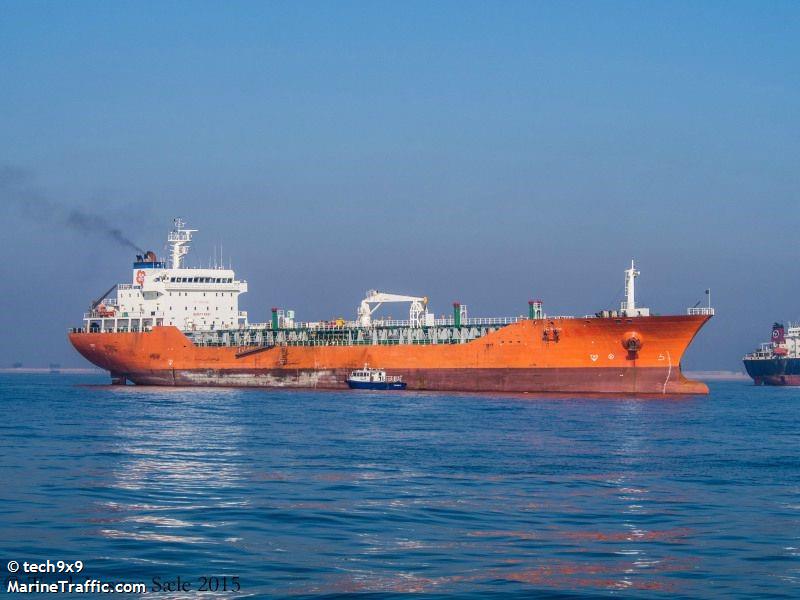Post-Honam fire, Maersk rings the changes on stowing dangerous goods

After a thorough review of current safety practices and policies in the stowage of dangerous cargo, Maersk has now completed implementation of new guidelines to improve safety across its container vessel fleet.
Following the deadly fire aboard the 15,000 teu Maersk Honam in March this year, Maersk took measures and implemented additional preliminary guidelines for stowage of dangerous goods. The company evaluated over 3,000 United Nations numbers of hazardous materials in order to further understand and improve dangerous cargo stowage onboard container vessels and developed a new set of principles called Risk Based Dangerous Goods Stowage.
Together with the American Bureau of Shipping (ABS), Maersk called for a workshop with other industry stakeholders to conduct a comprehensive hazard identification study that validated these new guidelines which have now been implemented across Maersk Line’s fleet of more than 750 vessels. The Risk Based Dangerous Goods Stowage principles have also been presented to the International Maritime Organization (IMO) as well as the Danish Maritime Authorities.
“All cargo aboard Maersk Honam was accepted as per the requirements of the International Maritime Dangerous Goods Code and stowed onboard the vessel accordingly. Despite this, as the fire originated in a cargo hold in front of the accommodation which held several containers with dangerous goods, it had an unbearably tragic outcome,” said Ole Graa Jakobsen, head of fleet technology at Maersk. “This clearly showed us that the international regulations and practices with regards to dangerous goods stowage needs to be reviewed in order to optimally protect crew, cargo, environment and vessels.”
On March 6 this year, five crew lost their lives when a serious fire ripped through the Maersk Honam in the Arabian Sea. The ship is currently docked in Dubai awaiting repairs. Maersk Honam was carrying dangerous goods in the cargo hold where the fire originated, however at this time, there is no evidence to suggest that dangerous goods caused the fire. All cargo was accepted as per the requirements of the International Maritime Dangerous Goods Code and stowed onboard the vessel accordingly. Maersk is still awaiting the investigation to establish the root cause of the fire in the cargo hold.
Cargo covered under the International Maritime Dangerous Goods Code will no longer be stowed next to any Maersk ship’s accommodation and main propulsion plant which is defined as the zone with the lowest risk tolerance. Similarly, risk tolerance will be low below deck and in the middle of the vessel, whereas the risk tolerance will be higher on deck fore and aft. Utilising statistics on container fires in the Cargo Incident Notification System (CINS), Maersk defined which UN numbers can be stored in each risk zone.
The Danish company said today that together with other members of the CINS, it is seeking to channel these experiences into developing new industry best practices:
“Containership fires are a problem for our entire industry and we intend to share and discuss our learnings from this thorough review within relevant industry forums. We very much believe that discussions, views and insights among container carriers can further improve fire safety in our industry,” said Jakobsen. “We aim for long term improvements by reviewing our systems and then designing an end-to-end process that is safe for our seafarers and smooth for our customers.”
In the coming months, a review aimed at creating best management practices for dangerous goods stowage will be undertaken with participation from ABS, Lloyds Register, the International Group of P&I Clubs, National Cargo Bureau, the TT Club and Exis Technologies. Once the project is completed the best management practices will be published and presented to the IMO.

 in March this year, Maersk took measures and implemented additional preliminary guidelines for stowage of dangerous goods. The company evaluated over 3,000 United Nations numbers of hazardous materials in order to further understand and improve dangerous cargo stowage onboard container vessels and developed a new set of principles called Risk Based Dangerous Goods Stowage.
in March this year, Maersk took measures and implemented additional preliminary guidelines for stowage of dangerous goods. The company evaluated over 3,000 United Nations numbers of hazardous materials in order to further understand and improve dangerous cargo stowage onboard container vessels and developed a new set of principles called Risk Based Dangerous Goods Stowage.
needs doing. I don’t think shippers are held to account enough for mistakes with loading of or at time malicious mis-declaration of goods being shipped.
Excellent news, waiting to see what will be the opinion of IMO on Maersk’s proposal to changes in dangerous goods stowage. Post Maersk Honam fire I had done and analysis on stowage of class 5.1 which can be viewed on http://www.shashikallada.com
I think the article highlights the fact that we are still seeing big fires and although we’ll have to wait for the accident report on the Honam, certainly there are clear parallels with other big box ship fires that were caused or seriously exacerbated by fraudulent and/or malicious misdeclaration of BoL contents, as Chris notes above.
On the basis that it isn’t practical to check every box to see if “it does what it says on the tin” perhaps it is time for the lines to stop charging more for IMDG cargoes in boxes.
The logic is simple really – if there is no financial benefit to misdeclaring what is really in the box then shippers are likely to be a little more honest, aren’t they? If we assume that what is in the box is legal in the first place then there is no reason to lie about it if the freight cost is the same.
IMDG cargoes are an important part of container shipping and do attract a higher freight rate which in turn helps offset the higher costs of moving them, chiefly from P&I cover etc. Perhaps i’m old and cynical but I think depending on honesty of shippers thousands of miles away to safeguard the life of your crew and the safety of your ship and her cargo is daft. Take away the need to lie about it!
Earlier the code had two aspects stowage and segregation for dangerous goods.
Looks like now the stowage part can be enhanced with incorporation of Risk Zone where each UN no will be permitted in particular zone based on the risk it possess. Which I think should further improvise the safe carrying agenda of DG.